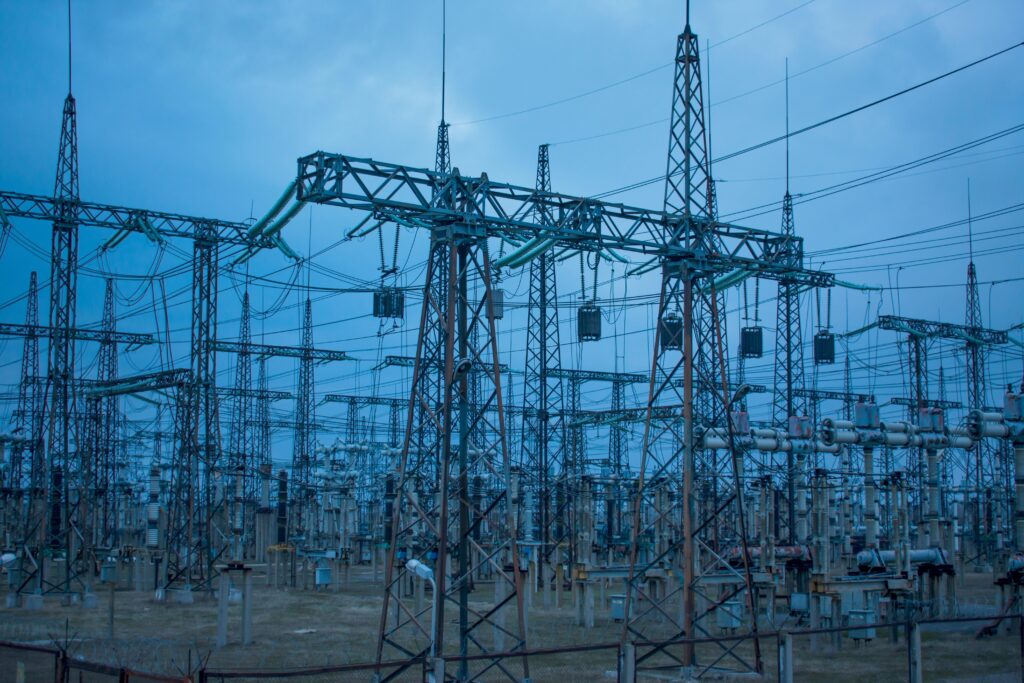
At R.T. Patterson, we design both air insulated and gas insulated substations. Each offers unique advantages—and choosing the right one comes down to your project’s specific goals, location, and budget. This post focuses on AIS: a proven solution that continues to deliver value in the right conditions.
What Is an Air Insulated Substation?
An air insulated substation (AIS) is the classic workhorse of electrical power systems. It uses open-air to insulate its electrical equipment—things like switches, transformers, and circuit breakers. You’ll see everything right there: exposed conductors, insulators, and steel structures laid out in the open.
It might not look fancy, but it works. And it’s been working for decades.
How AIS Compares to GIS—and Why Both Matter
You might hear about gas insulated substations (GIS) as a modern alternative. Instead of open air, GIS uses SF6 gas inside sealed containers to insulate the equipment. It’s compact, clean-looking, and great for tight spaces. But bigger isn't always better.
Here’s how they stack up:
| Feature | AIS | GIS |
| Space Needed | Requires more space | Compact footprint |
| Cost | Lower initial cost | Higher upfront cost |
| Maintenance | Easier to inspect and repair | More complex, specialized care |
| Environmental Risk | No gas handling required | SF6 gas has environmental concerns |
| Installation Time | Faster, simpler | Longer, more involved setup |
GIS is an excellent fit for urban or indoor installations. But for projects with room to breathe, AIS often delivers more flexibility at a lower cost.
When AIS Is the Right Fit (And When It’s Not)
AIS is still the right answer in many projects. It’s especially ideal when:
- You have plenty of outdoor space
- You need a more budget-friendly substation
- Ease of maintenance is a priority
- The environment isn’t too harsh
When is it NOT the right fit?
- Urban or space-constrained environments
- Areas with frequent, severe weather
- Sites where aesthetics or enclosure is a concern
R.T. Patterson’s Experience with AIS
We’ve been designing and implementing AIS solutions for decades. Whether it's for utility companies, industrial facilities, or campus infrastructure, AIS remains a reliable and efficient choice when space and accessibility allow.
Example: In one recent project, a client needed a substation upgrade in a rural industrial park. We delivered a complete AIS design that lowered construction costs, reduced outage risk, and allowed for future expansion.
Our team collaborated closely with the utility and plant engineers to make sure the design was both code-compliant and easy to maintain.
What to Consider When Planning One
Here are a few questions to ask early:
- Do we have the land for an AIS?
- How important is upfront cost vs. long-term compactness?
- Who will maintain this, and do they have the right skills?
- Are there environmental or permitting hurdles?
Pro Tip: Bring your engineering team into the conversation early. The earlier we can help you assess site conditions and project goals, the more value we can bring.
Final Takeaway
There’s no one-size-fits-all in substation design. AIS is a great fit when space is available, costs matter, and maintenance simplicity is a priority. GIS is a better choice in urban or space-constrained environments. The key is knowing which path leads to the best long-term outcome—and that’s where our team comes in.
If you’re comparing substation options or starting from scratch, talk to our engineers. We’ll help you make a smart, informed decision based on what your project actually needs.